
Impermanence
Choreographed by Rafael Bonachela
Primary School Resource Pack


Impermanence
Choreographed by Rafael Bonachela
Primary School Resource Pack
The Resource Pack will help your students understand the choreographic process Rafael Bonachela used with Company dancers to create and remount Impermanence. It introduces Sydney Dance Company history, key creatives, Company dancers, accompaniment, concepts, and inspirations behind both the creation and remounting of the performance.
You’ll find a range of activities to lead with your students, including reading, writing, watching videos, and engaging in creative movement tasks. The pack also includes a glossary to help you easily understand and explain dance terms.
The pack contains a BEFORE THE SHOW section with ideas for research and discussion in the lead up to seeing Impermanence and an AFTER THE SHOW section with follow-up tasks to support learning in performance, composition and appreciation. The suggested activities in the Impermanence Resource Pack can be further adapted by teachers to suit the requirements of Early Stage 1 and Stage 1 in NSW and the equivalent in other states.
Look out for the icons on each page to assist you through the range of activities.
KEY
Throughout this document, you will see the following icons:
Before the Show After the Show
The information and tasks included in this Resource Pack are designed to support the delivery of dance curriculum in schools. These elements link to the following criteria for Stages 2 and 3.

“Dance allows individuals and communities to shape their cultural identity and express their deepest feelings. These experiences continue to resonate throughout our lives, transforming our minds, bodies and souls.”
Rafael Bonachela
Sydney Dance Company is Australia’s leading contemporary dance company.
Sydney Dance Company was founded in 1969 by dancer Suzanne Musitz and was known as The Dance Company (NSW). In 1975-1976 the company was directed by Dutch choreographer Jaap Flier, before Australian choreographer Graeme Murphy became the Artistic Director in 1976.
In 1979, the name of the Company changed to Sydney Dance Company, and the Company was led by Graeme for thirty years.
Since 2009, the Company has been led by Spanish-born Artistic Director Rafael Bonachela. Each year, the Company collaborates with choreographers, designers, composers and musicians, and performs in Sydney and around Australia as well as internationally.
In addition to performances, Sydney Dance Company offers dance classes and workshops in person and online.
Sydney Dance Company is based in Sydney’s Walsh Bay Arts Precinct, minutes from the famous Sydney Harbour Bridge and Sydney Opera House.
Contemporary dance is a broad and versatile genre that incorporates elements from classical ballet, modern dance and sometimes popular dance forms like hip hop. While there are specific contemporary dance techniques, such as Cunningham or Graham, many choreographers are not confined to a fixed set of steps or movement vocabulary. The term ‘contemporary’ means ‘belonging to the present,’ making the definition of contemporary dance ever evolving. It is a creative expression that reflects the present moment.
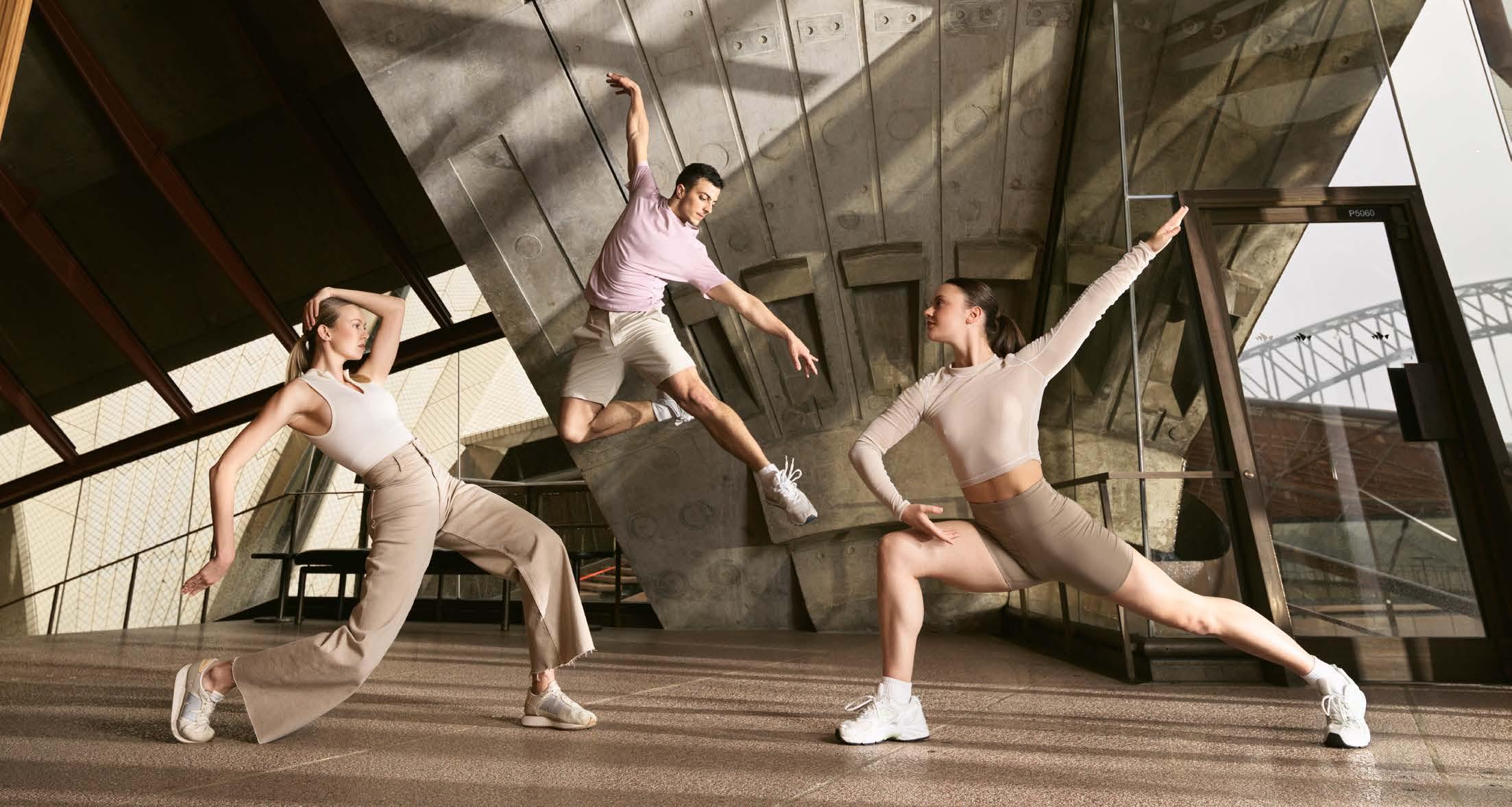
Rafael Bonachela was born in Barcelona where he began his early dance training before moving to London. In 1992, he joined the legendary Rambert Dance Company.
He remained with Rambert as a dancer and Associate Choreographer until 2006, when he set up the Bonachela Dance Company.
As a choreographer, Rafael has created works for companies all over the world, including Dresden Frankfurt Dance Company (Germany), Candoco (UK), George Piper Dancers (UK) and Contemporanea de Cuba (Cuba).
In 2009, Rafael was appointed as Sydney Dance Company’s Artistic Director, making headlines around the world. Through his time as Artistic Director, Rafael has had Australian and international choreographers create works for the Company. Rafael has also worked with artists in popular culture such as Kylie Minogue, Tina Turner, Sarah Blasko and Katie Noonan as well as fashion designers such as Bianca Spender, Dion Lee and Toni Maticevski. These collaborations are a source of inspiration for Rafael.

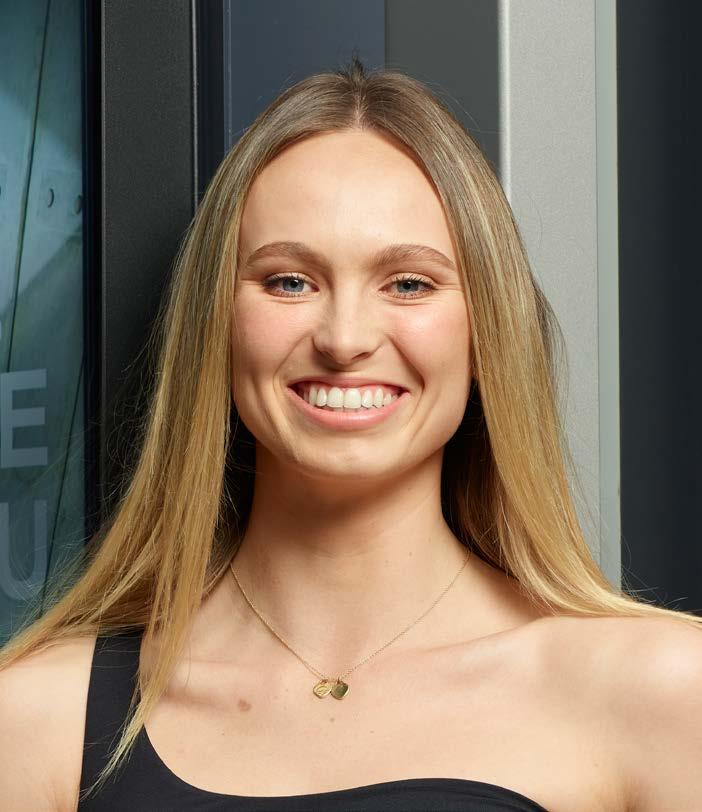









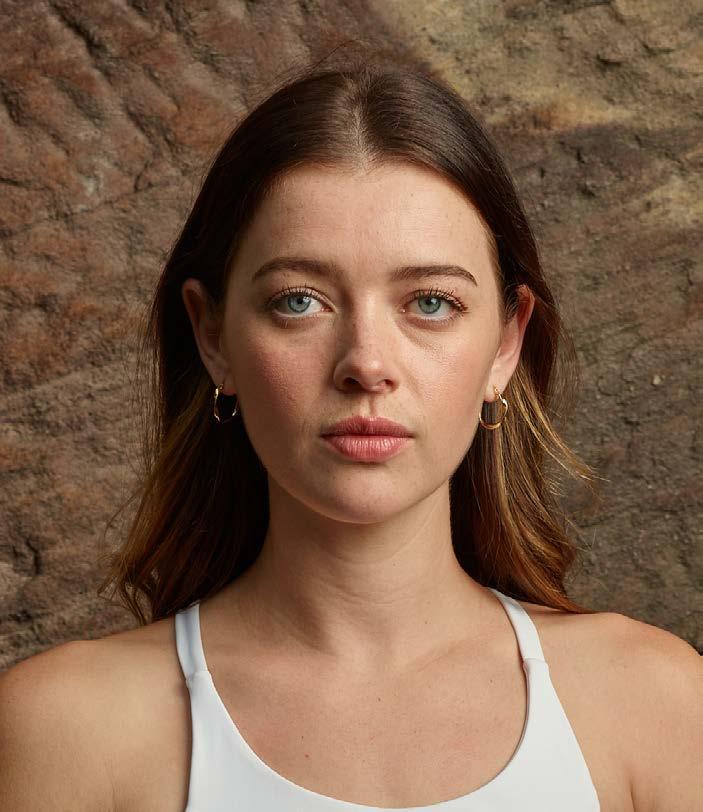

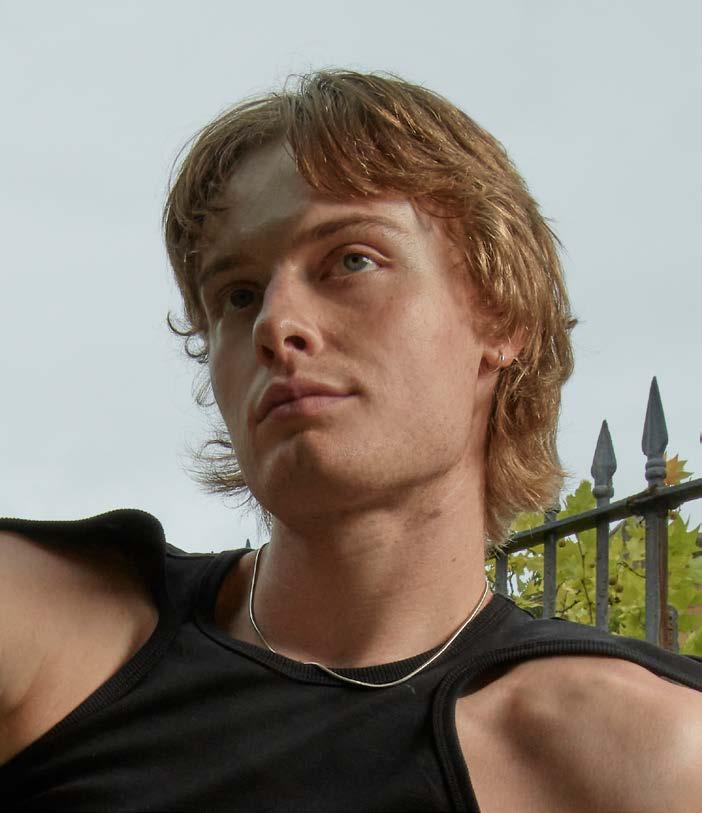

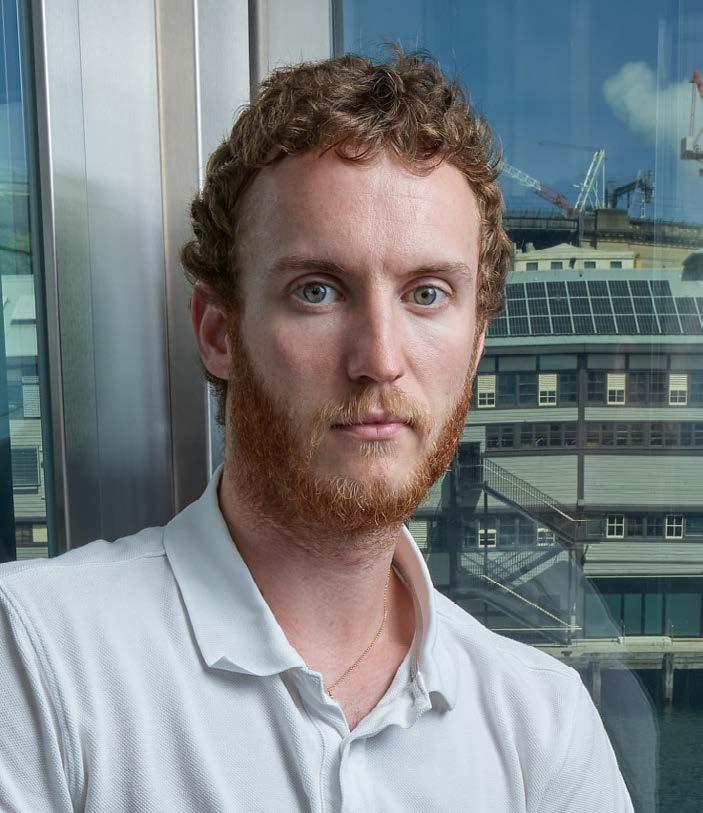

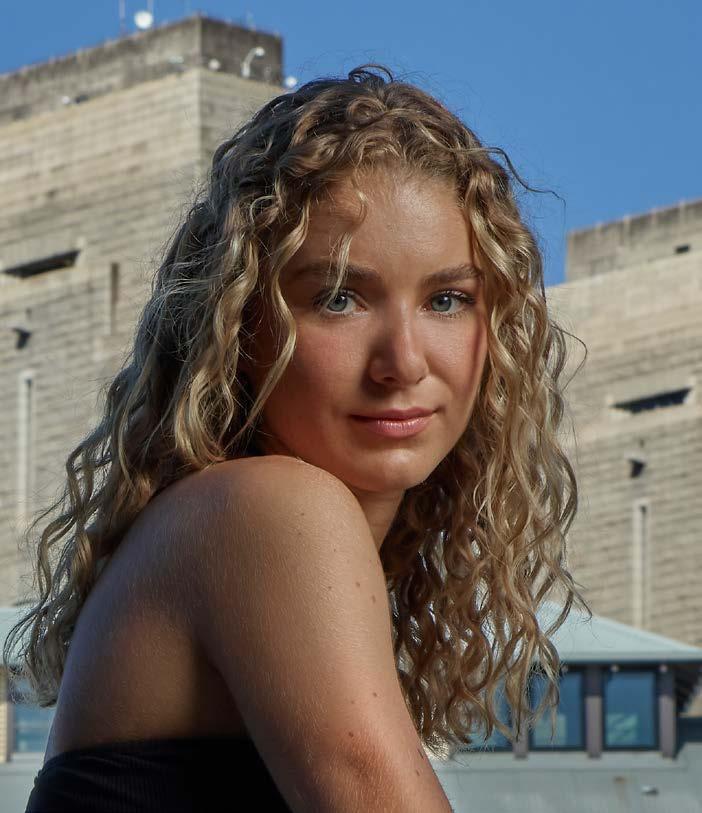



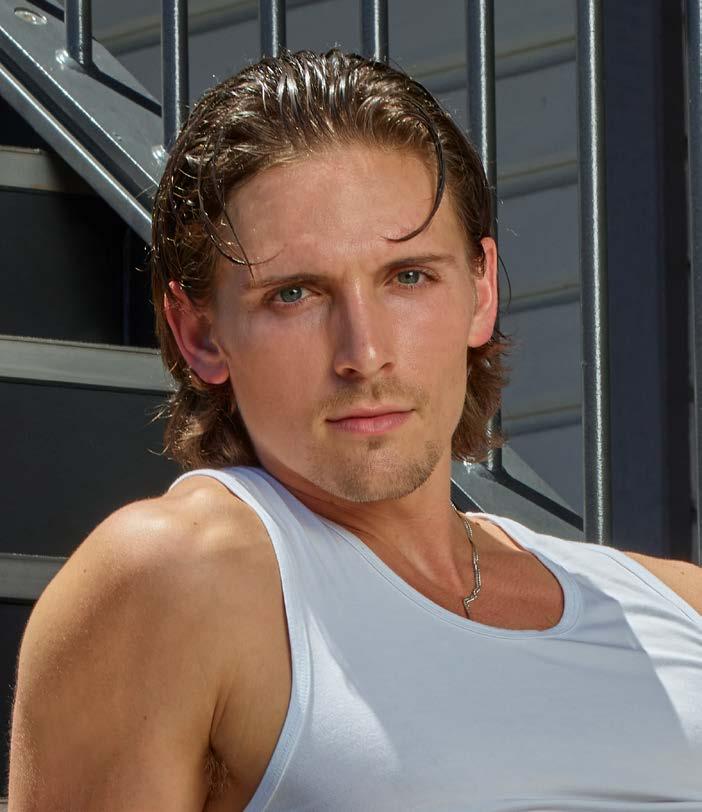







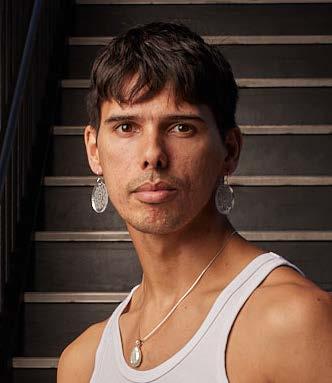






Watch this video of Impermanence and venture behind-the-scenes as Rafael and the dancers discuss the making of the work.

Impermanence is a contemporary dance work by choreographer Rafael Bonachela that explores the contrast between beauty and devastation. The work is accompanied by a powerful score (piece of music) from Grammy Award-winning composer Bryce Dessner. The music was co-commissioned and originally performed by the Australian String Quartet and for the 2024 Primary School Matinee will be performed live on stage by the Partridge String Quartet.
Impermanence was originally scheduled to premiere in 2020, but the COVID-19 pandemic forced Sydney Dance Company to cancel the performances. It finally premiered at the Roslyn Packer Theatre in Walsh Bay in 2021 and is now being remounted as part of Sydney Dance Company’s 2024 Season, Twofold. Remounting a work provides choreographers and dancers with an exciting and challenging opportunity to collaborate, share stories and explore new dynamics within the ensemble.
The idea for Impermanence started in July 2019 during a conversation with music composer Bryce Dessner. Rafael had worked with Bryce in 2015 on a piece called Frame of Mind. They both felt there was more that they could explore together, leading Bryce to compose the score of Impermanence for Sydney Dance Company.
The title Impermanence reflects the idea that everything in life is temporary. Rafael and Bryce talked about this concept in Paris, following the fire at the Notre-Dame Cathedral, which damaged much of the beloved building. This made them think about how even things that seem permanent can fall apart. They decided to explore this idea through both music and choreography.
Whilst Bryce was composing the score for Impermanence, Australia was experiencing catastrophic bushfires. The images deeply affected him, especially since he had visited Australia and met the Company dancers. This personal connection made the impact of the fires resonate even more in the music and project.
The concept of change and impermanence inspired Rafael to create choreography that captures the fragile but urgent nature of life. Bryce’s complex and shifting music complemented this idea perfectly. Together they explored emotions like panic and the tension between movement and stillness, making the choreography a fitting response to the score.
Impermanence was set to premiere in March 2020 as a short work, but the COVID-19 pandemic forced Sydney Dance Company to cancel the performances. The pandemic highlighted the value of simple, meaningful moments, making the work even more moving.
After initial pandemic delays, Rafael and Bryce expanded Impermanence into a full-length piece. Bryce composed new music, and Rafael created new choreography. The work premiered in 2021 and received positive feedback from audiences worldwide. In 2024, Rafael chose to remount Impermanence as part of Sydney Dance Company’s Season Two Program. For more details on the remounting process, please see page 14 of the Resource Pack.

A production like Impermanence requires many people to contribute to the final product that you see on stage. To create a dance for the stage there are two phases:
1. Choreographic Creation and Pre-Production
This phase involves planning, creating, working as a team and problem solving prior to being on stage.
2. Performance and Production
This phase brings a work to life and is what the audience gets to enjoy every performance.
Artistic Director and Choreographer – Rafael Bonachela
As an Artistic Director, Rafael is responsible for crafting Sydney Dance Company’s yearly seasons, selecting the works that will be performed by the company in Australia and overseas and appointing guest choreographers to share their work. As a choreographer, Rafael creates new works for Sydney Dance Company but has also created works for companies all over the world.
Composer
Bryce’s role as a composer was to create a new piece of music using various instruments and techniques for the dancers to perform to. Bryce worked closely with Rafael to discuss the themes and ideas that would be incorporated into Impermanence, such as destruction, hope, and unexpected beauty.
Listen to Impermanence


A lighting designer decides how to use lights on stage to enhance the performance and help the audience focus on what’s happening.
Impermanence was first designed during the summer of 2019-2020, when Sydney was surrounded by devastating fires. The city was enveloped in an eerie darkness, with unusual, muted colors—monotone oranges, dark reds, soft greys, blues and greens—creating a haunting yet beautiful atmosphere. This unique light set the stage for a powerful visual experience.
A costume designers’ role is to create clothes that fit the vision and are practical to wear for performers. The layers and intensity of the music contrasted with moments of hope guided Aleisa’s design choices. She used a palette of muted hues and earthy tones to balance the music’s heaviness and symbolise hope amid devastation.
A set designer is responsible for creating the look of the stage for a production, their roles combine creativity with practicality. David’s job was to come up with imaginative designs while making sure they could be built and used effectively and able to tour around Australia and the world.
For Impermanence, David’s design sets the scene for the performance, reflecting the journey of the music and the movement of the dancers, and is enhanced by striking lighting effects. The clean, simple design of the set works in harmony with the clear and distinct music played by the string quartet on stage.
Rehearsal Associate – Charmene Yap
As key members of the artistic team, Richard and Charmene create the dancers schedule when they are in the studio and performing, as well as leading the rehearsals to make the performance the best it can be for every show.
A Stage Manager is required to communicate with the whole team, from when the dancers are needed on stage to when the sound engineer needs to start a new sound cue.
Guy is the technical expert who supervises the technical aspects of Impermanence such as lighting and set changes.
Annie’s job is sewing the costume designer’s ideas into items of clothing and to make sure the dancers costumes are comfortable to dance in, clean and mended for every performance.
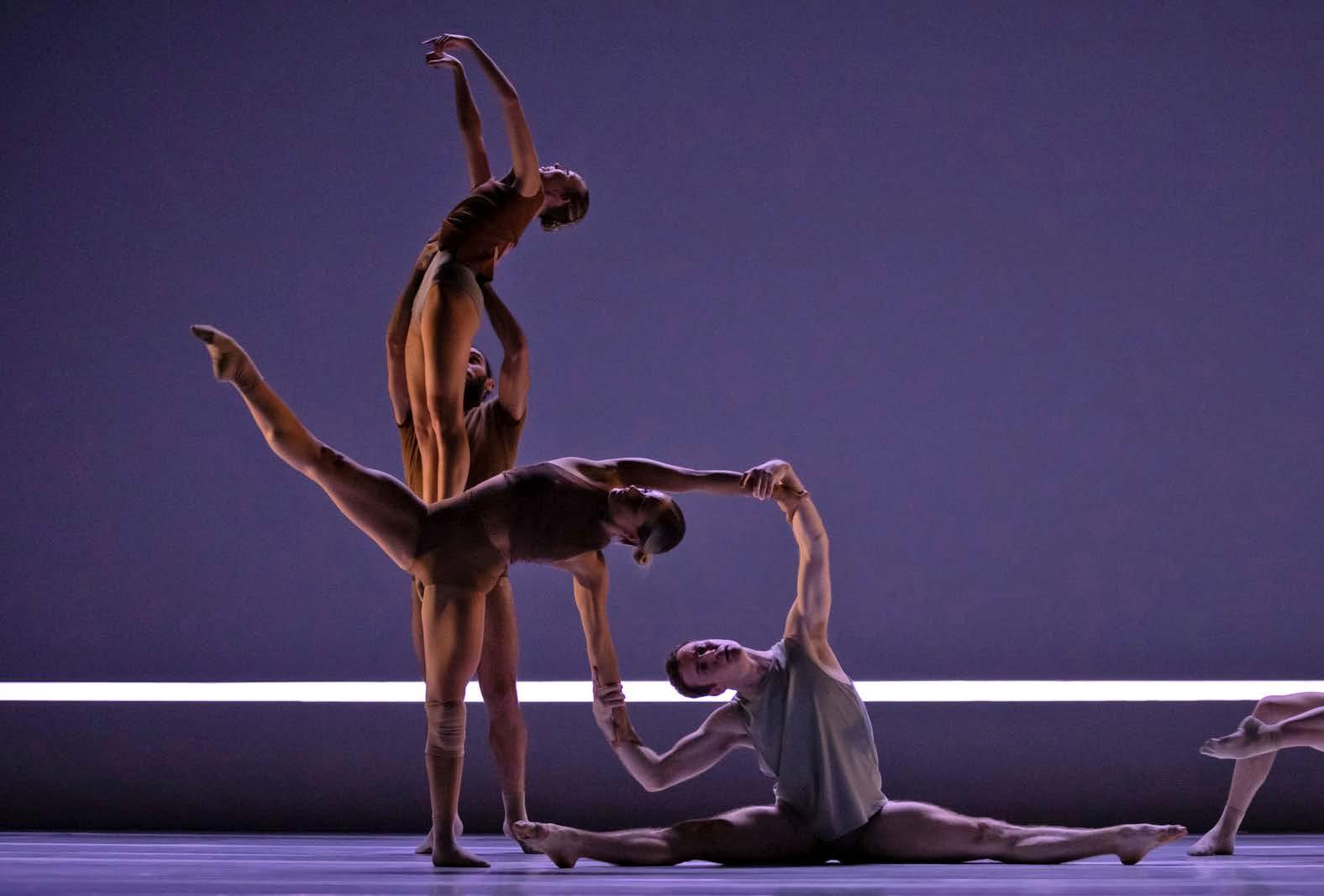
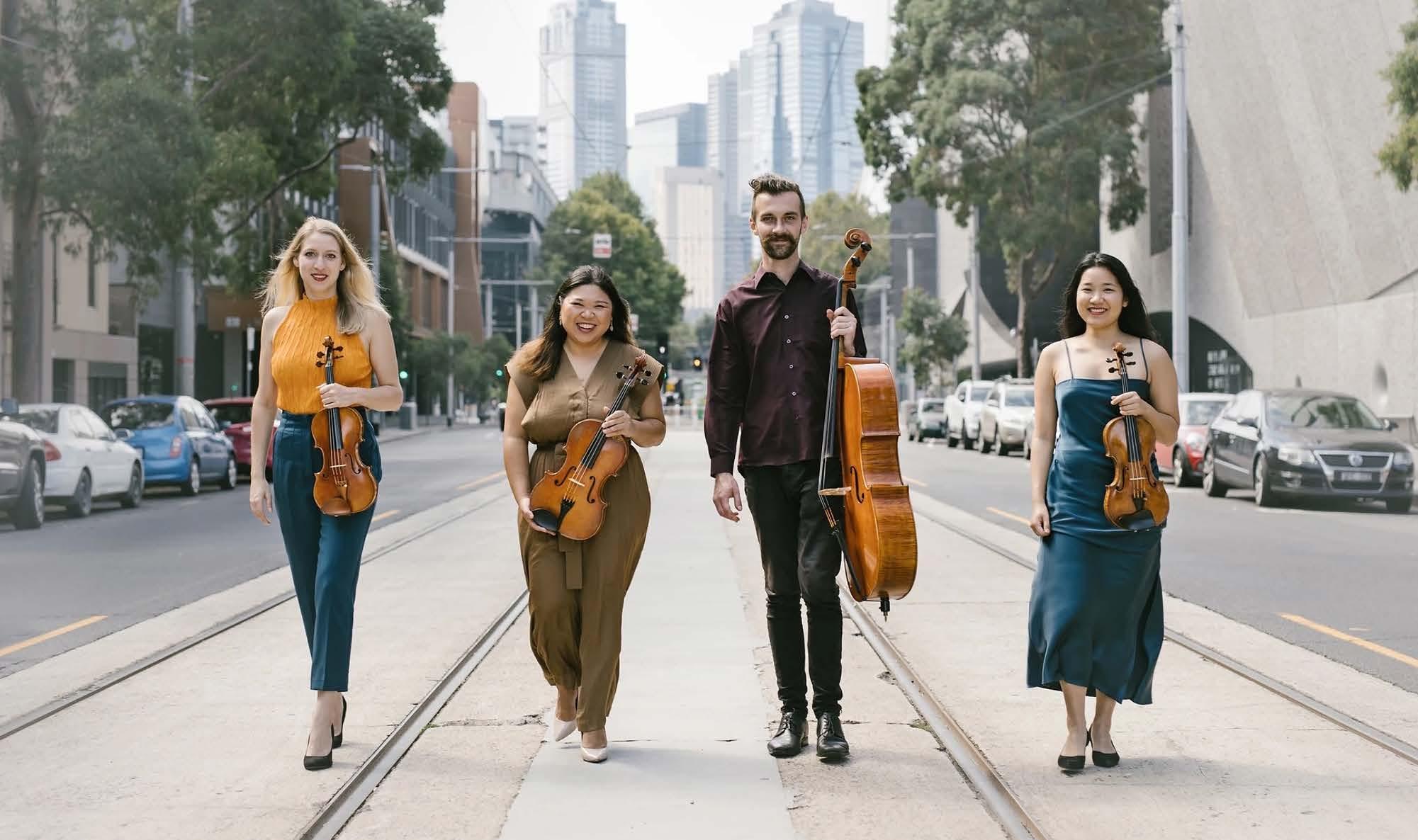
In the 2024 Primary School Matinee, the music will be performed live on stage by the Partridge String Quartet.
Known for their vibrant and exhilarating performances, the award-winning Partridge String Quartet has recently emerged as one of Australia’s leading string quartets of its generation.
As an ensemble that strives to bring joy and excitement to their audiences, the string quartet is passionate about performing well-loved masterpieces while inviting audiences to join their curiosity and exploration of the limitless possibilities that the string quartet genre has to offer.
Jos Jonker, violin
Mana Ohashi, violin
Eunise Cheng, viola Daniel Smith, cello
Read more about The Patridge String Quartet here.
Bryce Dessner’s music composition Impermanence was co-commissioned by the Australian String Quartet (ASQ) and Sydney Dance Company.
The ASQ will be sharing the 2024 performance season of Impermanence with the Partridge String Quartet.
As a contemporary dance company, Sydney Dance Company is very focused on creating work that is representative of the now. Sometimes, a piece from the Company’s repertoire will be selected to be performed in an encore season. This means there will be new dancers in the Company who were not a part of the original creative development of the work. In this instance, dancers who are new to the work will need to go through a process of learning and rehearsing the necessary choreography to rebuild the piece. This process is called remounting.
The possibility of remounting works in the future is often anticipated during the creative development of a new work. Because of this, archival footage (videos, images & rehearsal notes) of the choreography is recorded during the creative process and rehearsals. This archival footage plays an important role in the process of relearning choreography. Learning from a video can be confusing as the dancers are required to “flip” the choreography so they are learning the movements in the correct direction and with the correct arms and legs.
A number of the current Company dancers were part of the original production of Impermanence so they are able to collaborate with the newer dancers and pass on detailed information about the choreography. Valuable insight is passed from dancer to dancer throughout this process - information about the intention of the choreography and the smallest details of the movement make all the difference to the overall performance. This process of sharing knowledge ensures the remount of the piece stays as true to its original conception as possible, and the dancers preserve the specificity and distinctive quality of the original creation.

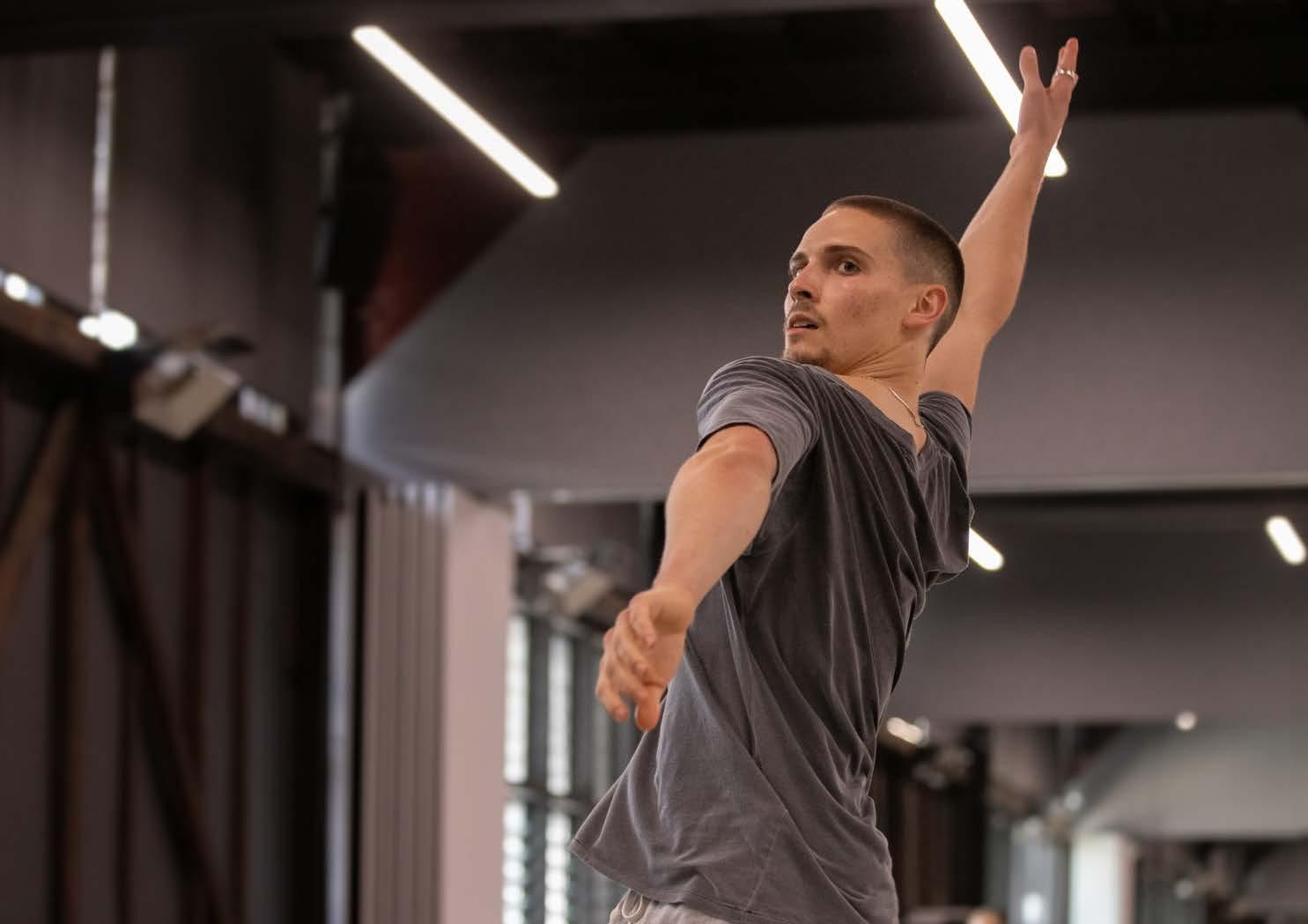

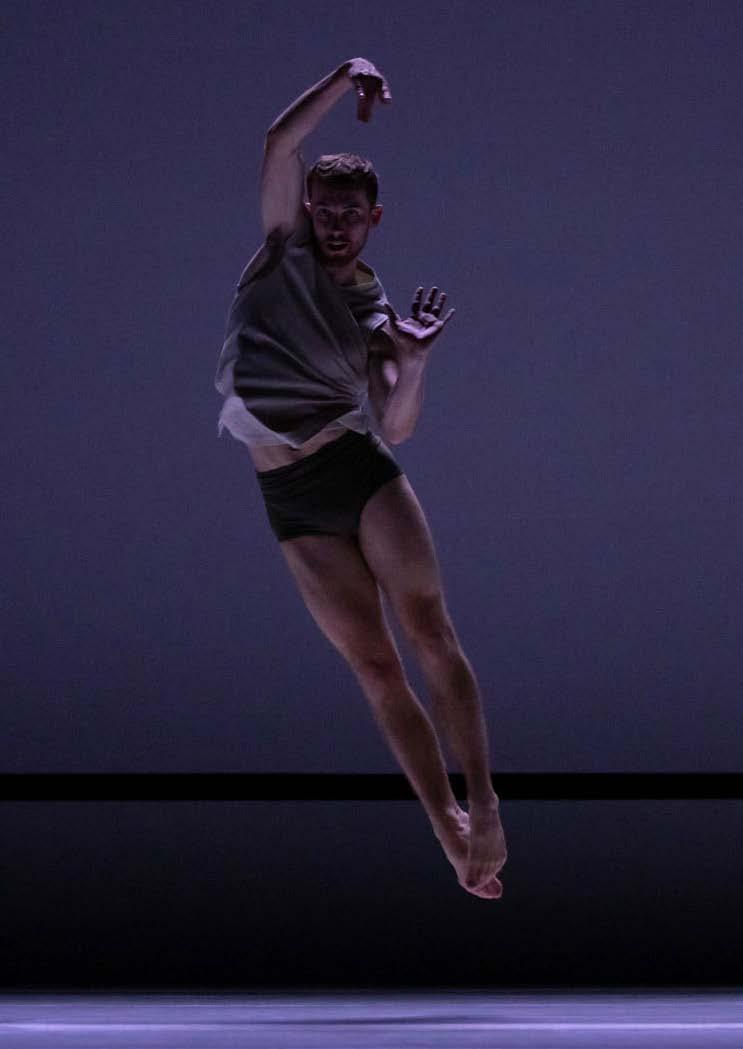
It is important to establish a safe creative space for young people to explore and create dance.
Key values underpin the foundation to building acceptance and supportiveness with no judgement, that ultimately allow for a positive creative experience. In all activities at Sydney Dance Company, we value:
Have a conversation with your class. What values do you want to have in the space when you’re exploring new movements? Are there any values you would add or change to the list above?
What does it look like to move and create within those values?
Our Class Values
Aim: To encourage exploration of movement through improvisation and acting on impulse in the context of contemporary dance.
Outcome: Students will be able to demonstrate confidence in foundational improvisational skills, think creatively, express themselves freely through movement and reflect on their improvisation experience.
Teaching note:
1. Contemporary dance has no limits on what it can be, which means there is no such thing as ‘wrong’ movement in contemporary dance. HAVE FUN WHILE YOU DANCE!
2. When guiding improvisation, allow at least a minute for each instruction so participants have time to fully explore each theme. For primary students, it might be helpful to focus on one task at a time on different days.
1. Click here to listen to Sydney Dance Company’s Spotify playlist for improvisation.
2. To warm up, start to move your body in a way that matches the music.
3. Make as many round shapes as possible with different parts of your body.
4. What does that look like, in slow motion?
5. Make as many square shapes as possible with your body.
6. What does it look like, in fast-forward?
7. How would you move if your elbow lead you around the room?
8. Can you rewind back to where you started?
9. How would you move if your big toe lead you around the room?
10. Now try to move your ear at the same time as your big toe.


1. Take a moment to look at the room you are dancing in.
2. Choose one item in your classroom and draw it with your body. What kind of shape is it? Is it light or heavy? Do the colours make you feel a certain way?
3. Choose another item in your classroom. Does this item stay in one place, or can it move? If you were to touch it, what texture would it have? Is it rigid or flexible?
4. Imagine you have drawn a vertical line from the top of your head to your toes, what does it look like if one side moves like your first item and the other side moves like your second?
5. When you feel ready to move on, start to trace the letters and assigned body parts to create new movement using the dynamics suggested:
GIGANTIC SHARP
S - Finger
Y - Elbow
D - Knee
N - Tongue
E - Shoulder
Y - Forehead
D - Palm
A - Big Toe
N - Hip
C - Ear
E - Eyebrow

6. Imagine you’re in a fish tank, choose an object in your imaginary fish tank and with a part of your body above your belly button and begin to draw it, like you are running late.
7. Choose another object in your fish tank and draw it with a body part below your belly button, this time like you’re stuck in the mud.
8. Can you draw both objects at the same time?
9. Can you perform this like you’re in deep water?
10. Continue to explore your fish tank’s objects drawing them with other body parts, using whatever speed or size of movement you would like until the song finishes.
FIZZY
C - Chest
O - Head
M - Wrist
P - Nose
A - Arm
N - Lips
Y - Little Toe
Rafael Bonachela was inspired by the burning of Notre-Dame Cathedral in Paris and the bushfires in Australia. He and the Company dancers discovered that the intense emotions from these events— suspense, fear, excitement, joy, relief—are similar to the feelings we experience on a rollercoaster.
In Impermanence, these emotions, along with the various shapes and directions of a rollercoaster ride, influenced some of the choreography and movement phrases.
Aim: To create a movement phrase that captures the experience and sensations of riding a rollercoaster, including its ups, downs and sudden changes.
Outcome: Students will:
• Develop movement skills by creating and refining a movement phrase that uses different levels, directions, speeds and dynamics to capture the feeling of a rollercoaster ride.
• Express ideas through dance by using the rollercoaster concept to convey its emotional and physical journey.
• Evaluate and reflect on their movement phrase to assess how well the phrase communicates the intended message of the experience and sensation of a rollercoaster.
Note:
To assist in delivering this creative task to your students, this resource pack includes a glossary on pages 24 - 25 to help you easily understand and explain dance terms.
1. Watch this video or use the image below and imagine you are on a roller coaster. Discuss the track’s curves, loops and drops; the slow, steady climb of a rollercoaster; the twist and turns.
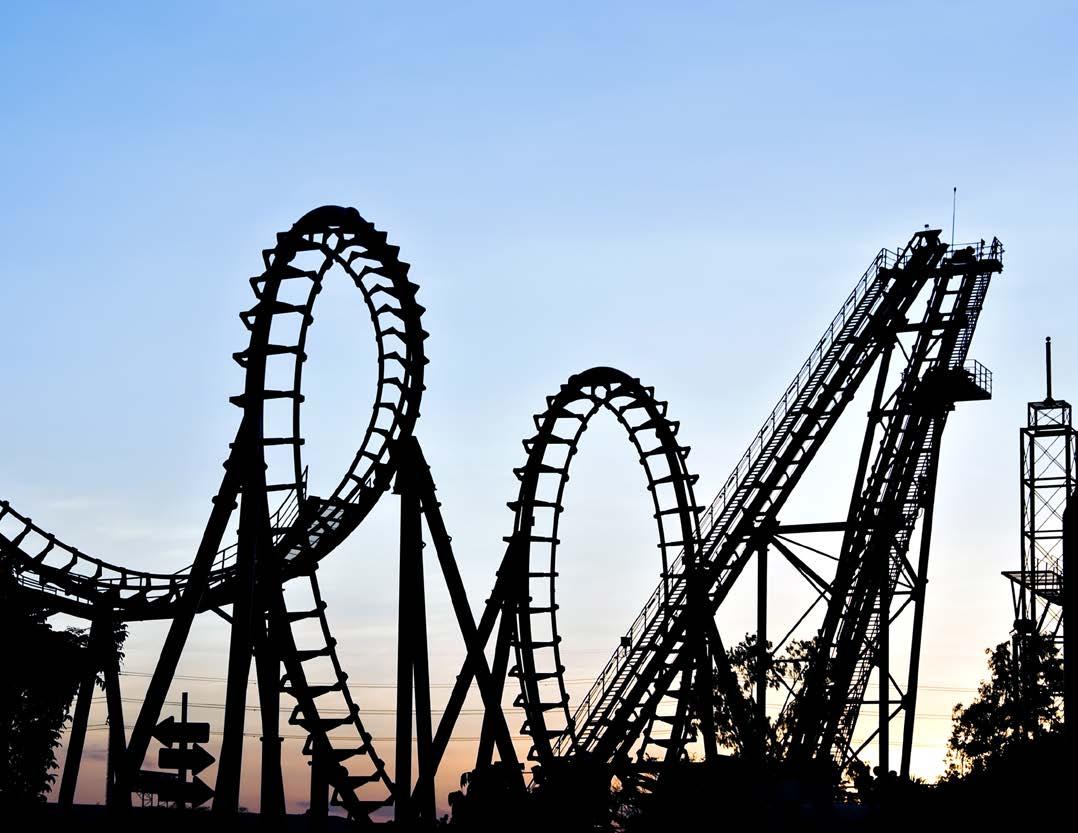
2. Start to explore how your whole body would move on the ride; leaning to the side, going up and down, and feeling the twists and turns.
3. Using your spine as the tracks of the roller coaster, improvise and explore around the room as you play with different elements of a roller coaster. See some suggestions below
• A slow steady climb
• A sudden drop
• Tight Turns
• Twists
• Spiral tracks
• Sideways leans
a. How could you incorporate the bend in your knees, twist from your waist.
b. Can you create loops with your arms, legs and body?
c. Can you use a movement to change your direction and guide you to your next movement?
4. Using the movements you’ve explored, create a phrase by picking different movements and joining them together to make a movement phrase setting them in 8-count phrases, between 1-2 sets of 8-counts. (Refer to glossary on pages 24-25 for more information about this terminology).
5. Now that you have your phrase, you can give it a name. Think of a name that represents the type of movement you’re making, or something that will help you remember it!
6. You can explore different dynamics to continue to develop your choreography (refer to glossary to explore different types of dynamics).
a. Does changing the size of your movement add interest?
b. Could you change the speed of some of your movements? What changes if you start fast and finish in slow-motion?
The teacher will play the role of choreographer and decide what order the phrases will go in.
1. Working in groups of 2-4, give each person a letter (A, B, C, D, etc.). Start by teaching each other your phrases. Tell your group the name of your phrase to help everyone remember which phrase is which.
2. The choreographer (your teacher) will then tell you what the order the phrases will go in (eg. B, C, D, A).
3. Rehearse the phrases in the nominated order and link them together so they flow seamlessly into each other.
4. Perform the group dance for the rest of the class.
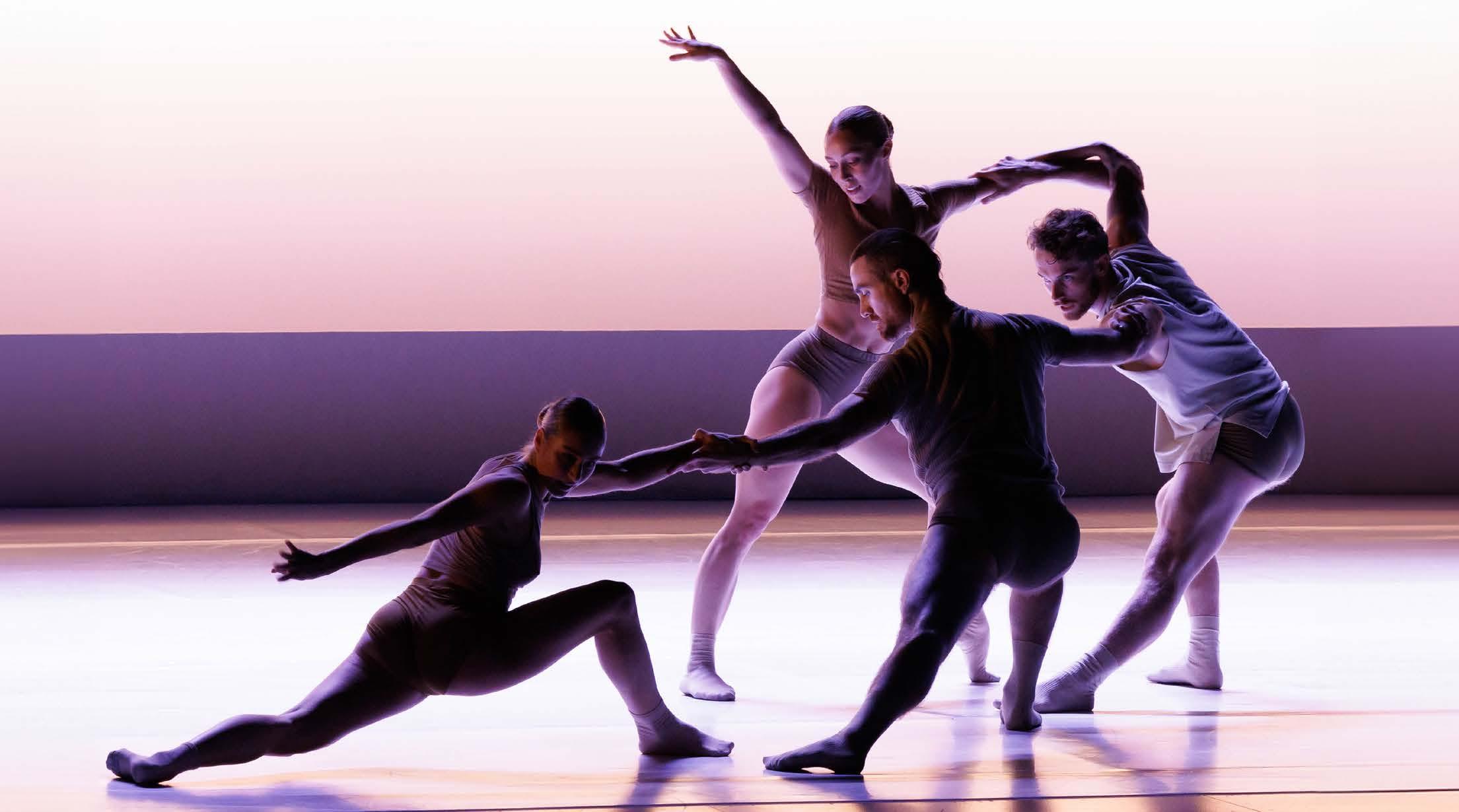
Watch, Think, Respond! Appreciation Task
Aim: Students will reflect on their experience of watching Impermanence and investigate how various dance elements and performance settings contribute to the overall experience of watching dance.
Outcome: Students effectively communicate their insights about watching Impermanence through written, spoken or drawn responses, demonstrating their ability to describe and interpret various aspects of live dance performance.
Appreciation Task Direction: After watching Sydney Dance Company’s Impermanence by Rafael Bonachela, complete the questions in the table below. Students may choose to write or draw their answers.
Watch, Think, Respond!
Question
What did you see, hear, feel or think whilst watching the performance?
Where were the dancers performing?
(Describe the space, theatre space, staging)
How did the dancers move?
(Describe the types of movement, for example, is it fast, slow, sharp, soft?)
How many dancers did you see?
(Describe if they danced in small or large groups, solo)
Note:
The appreciation task can be modified to suit the abilities of students across Stage 2 and 3. The task can be applied to another piece of live dance performance.
Response

Task: After completing the “Watch, Think, Respond!” table and discussing their answers with classmates, each student will give a short speech about their experience watching Impermanence.
Instructions
Prepare: Students should use their responses from the table to organise a speech about their experience of watching Impermanence. They can focus on sharing their observations and feelings about the performance.
What to include in the speech:
• What they saw and felt: describe what they saw, heard, and felt during the dance performance.
• Performance setting: explain where the dancers performed, including any details about the space or stage.
• Movement description: talk about how the dancers moved (e.g., fast, slow, sharp, soft) and how it made them feel.
• Number of dancers: mention how many dancers were in the performance and whether they danced alone, in small groups or in large groups.
1. Group option: This task can be modified for group presentations if preferred.
2. Presentation tips: Encourage students to memorise their speeches and use their clearest speaking voice.
3. Audience appreciation: Discuss with the class how to show appreciation to classmates during their presentations, such as listening attentively and offering positive feedback.
Action, space, time, dynamics, relationship and structure make up the elements of dance. These are tools that are used in dance making, performing and appreciating.
Action
In dance, action refers to the specific movements or gestures that dancers perform. Actions are the building blocks of choreography and help to express ideas, emotions and stories in a dance.
Space
Space can be described as personal to the dancer and general to the performance space. Included in the description of space is level, shape, dimension, direction, planes and pathways.
Time
Explaining ‘time’ involves discussing how dancers use metre, rhythm, tempo, accents, stillness and phrasing to shape their movements. Metre (combination of beats and time signatures), rhythm (arranging movement to different patterns – simple, complex, regular), tempo (speed in which we perform), accent (the emphasis on a movement), stillness (a sense of waiting) and phrasing (organising movement into a grouping of counts).
Dynamic
Dynamics help create movement qualities through the release of energy, weight and/ or force over a period of time. Examples of dynamics include; sustained (slow and smooth – for example yoga), percussive (sudden and sharp – for example flamenco), suspended (suspense and defiance of gravity), swinging (moving to and fro – for example a pendulum action), collapsed (falling or releasing) and vibratory (shaking and wiggling).
Relationship
In dance, relationship refers to how dancers interact with each other and their environment. This includes how dancers connect and move in relation to one another, the space around them and any objects they may be using. Relationships in dance help to create meaning and add depth to a performance by showing how dancers work together or contrast with each other.
Structure
Structure in dance is the organisation and arrangement of movements and sections within a dance performance. It refers to the way a dance is put together, including the beginning, middle, and end, and how different phrases are ordered to create a cohesive whole. Structure helps to shape the narrative and progression of a dance performance.
Choreography is the process of creating and arranging dance. It involves designing a series of steps, patterns, phrases and sequences that dancers perform to tell a story or express an idea. Choreographers decide how the dance moves flow, change and come together to make a performance.
A movement phrase is a short sequence of steps (1-2 minutes long). Phrases are often given names to help the dancers, choreographer and rehearsal director refer to the same piece choreography.
In music there are typically 4-counts, or beats, per measure. In dance, a measure is usually “musically paired” with a second measure. These two measures equal a total of 8-counts, which is why dancers count in sets of 8.
8-counts keep track of the beat and tempo but break up the song into manageable sections. One set of 8 is like a sentence.
After every 8-counts, another 8-counts begins, then another, and another.
Dancers can find the beginning of an 8-count by identifying the downbeat, (the strongest accent of the measure).
A stimulus is an idea, theme, or source of inspiration used to spark creativity and generate movement in dance. This can be anything from a piece of music, an image, a story or even an emotion. The stimulus can serve as the starting point for creating choreography and developing the content of a dance piece.
Safe dance practice means taking steps to keep dancers safe and healthy. This includes warming up and cooling down properly, using the right techniques to avoid getting hurt, making sure the dance area is safe and knowing your own and others’ limits. It helps dancers perform well while reducing the chance of injuries.
Locomotor movement refers to movements that involve traveling from one place to another. These include walking, running, jumping, hopping, skipping, and sliding. Non-locomotor movement involves movements that occur in place and do not require traveling through space. These movements include actions such as bending, stretching, twisting and swinging.
Kinesthetic response is the ability to perceive and react to movement through physical sensations. It involves how dancers’ sense and adjust their movements based on feedback from their own bodies and the environment. Kinesthetic response helps dancers to be aware of their body’s position and movement, allowing for more precise and expressive dance performance.
